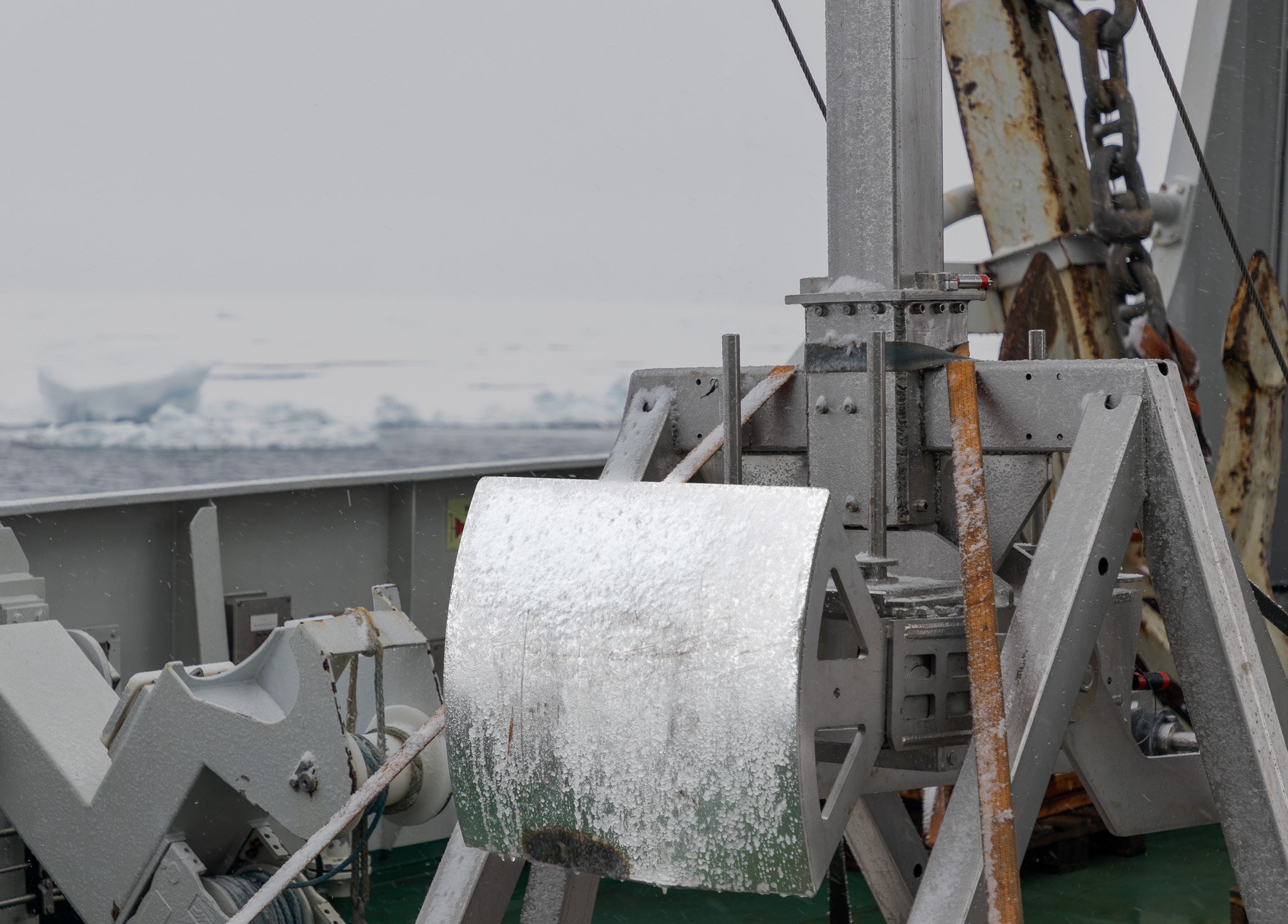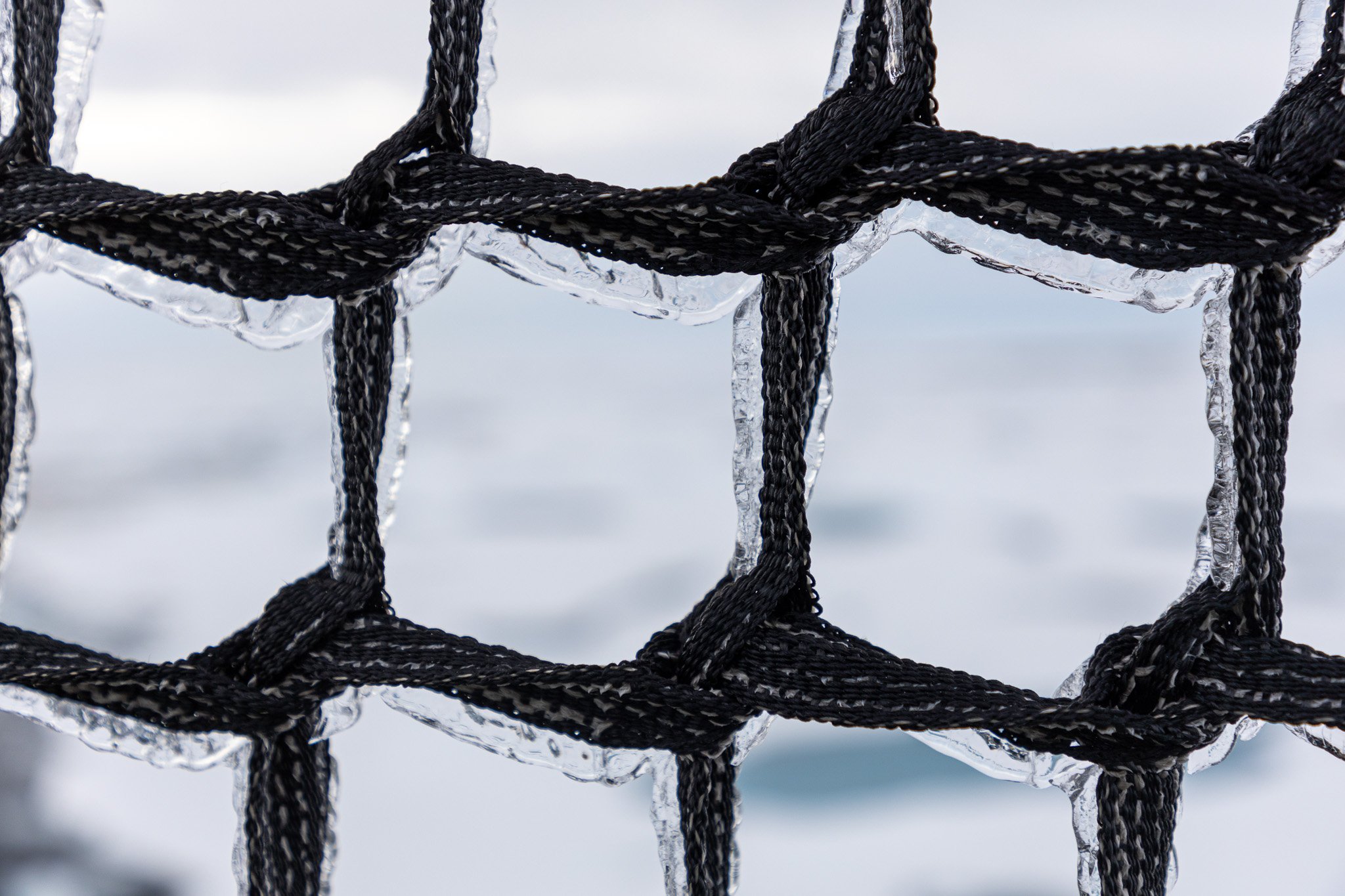
Norway and the Central Arctic Ocean
In August of 2023 I was invited on a research cruise being conducted by the Norwegian Polar Institute to who were traveling to the Central Arctic Ocean. The project had multiple goals, but the main objective was to collect data to help answer questions about the overall state of the Central Arctic Ocean and how it is changing. The data was collected using many different tools, water temperatures and salinity were measured at multiple depths, helping understand how climate change was accelerating and mapping the North Atlantic Current. Phytoplankton and zooplankton were collected and documented as the ship traveled north along transects. Samples of the sediment at the bottom of the ocean were collected, samples of sea ice were taken, I could keep going about the data collected and the research being done, but if you’d like more info you should check out either the Norwegian Polar Institutes website, or the Arctic Council. I was invited as an Unungan graduate student, through the Arctic Council. I should talk more about all the organizations involved, but am very thankful to all of them for letting me join on the trip.
The trip started with my flight to Oslo, it was in August, the sun was rising as we were flying over Baffin Island in eastern Canada. We stopped at Reykjavik, Iceland for a couple hours, then continued on to Oslo. I got into Oslo in the afternoon, after traveling a long flight and the time zone change I fell asleep at 6pm Oslo time, and woke up at 4 in the morning the next day. I wasn’t traveling again until the next day, so I had a free day in Oslo. I decided to check out the Fram Museum, the Kon-Tiki Museum, and the Norwegian Maritime Museum, but they didn’t open until later in the morning, so I just walked around Oslo for a couple hours. My hotel was across from the Parliament Building, so I started there, then walked over to where the consulate buildings are, over to the harbor, and then to the museums right when they opened. I like museums so I thought it was really interesting to check out a couple, and they are all right next to each other. As a history guy I thought the Fram Museum and the Maritime Museum were great. The Fram had a really good way of showing the history of exploration of the Arctic and Antarctic, with the highlight being the actual Fram ship that took Amundsen to be the first man to reach the south pole. At the Maritime Museum I got to sit in on a guy talking to a group from a cruise ship about viking boats and how they made them, which was really interesting. The Kon-Tiki was alright, it was interesting to see and I thought it had some great displays, but I was thought the Fram and Maritime Museum were the best. I would still recommend going to the Kon-Tiki, but I thought the best part of Kon-Tiki was how it helped showcased the pride Norwegians have in their maritime culture and exploration spirit.
Sunrise over Baffin Island on the flight to Oslo.
The Norwegian Parliament Building (Storting Building).
The Grand Hotel Oslo (I think).
Park in front the Parliament Building.
Park in front the Parliament Building.
Photos from around Oslo.
Photos from around Oslo.
Photos from around Oslo.
Photos from around Oslo.
Photos from around Oslo.
Photos from around Oslo.
Photos from around Oslo.
Photos from around Oslo.
Photos from around Oslo.
Picture from the Fram Museum on board the actual ship.
The Fram.
Ferry ride from the Fram Museum back to the city center.
Ferry ride from the Fram Museum back to the city center.
The following day I traveled to Longyearbyen, known as the worlds northernmost settlement. Historically this area of the world was first explored by whalers and fur hunters, and later became a mining community, mining mostly coal. I think the still mine for coal, but it is mostly used locally for energy. The town was actually pretty large compared to the small northern villages I am used to in Alaska. Longyearbyen is also a tourist location for people who want to see polar bears, northern lights, and as a jumping point for travel farther north. There are lot of small shops, hotels, and even a University for arctic research. This is where we boarded the Kronsprins Haakon and started our journey into the Central Arctic.
I loved the colors of the buildings in Longyearbyen.
The hotel we stayed at.
In case you're not sure where to park you dog sled.
Lots of Fulmars followed the boat into the Arctic.
The sun never set while we were on the Ocean, and the sea was flat calm for the first portion of the cruise.
This was one of the nets used for zooplankton collection.
It was pretty lighting and so calm it was amazing.
It was pretty lighting and so calm it was amazing.
It was pretty lighting and so calm it was amazing.
Sorting zooplankton.
More zooplankton sorting.
Some of the equipment on deck.
Sea ice started to show up.
The CTD machine that a collects samples to measure salinity, temperature, and depth through the water column.
Another instrument that collects zooplankton at different depths.
View behind the boat.
Ice was intermittent at this point, but still had beautiful colors.
Puffins swan by.
Fulmars flying next to the boat.
Fulmars flying next to the boat.
One of my hopes for the trip was that I would see Polar Bears. I had never seen a Polar Bear in the wild, and not many people get to travel to see them in the summer sea ice. One day a curious sow and cub came to investigate the boat. They hung out for about 20 minutes before figuring out we weren’t worth hanging around and they took off. It was cool seeing them walk and play on the ice, and also go for a swim in the water. Seeing them in their natural environment was something I won’t forget.
As we traveled farther north the sea ice became thicker and more continuous. We also stopped at a location where the sea ice was thick enough to take measurements and collect ice core samples. After checking the ice depth and making sure it was safe, we were allowed to walk off the boat and hang out on the sea ice. We were looking for an area big enough to even try playing a game of soccer, but it didn’t work out. It was really weird being on an ice breaker, I was used to being on boats that roll with the swells, but on the ice-breaker the boat would list as it crushed through the ice, but then it would hold at that list for a second or two, so you never really got your sea legs because the rolling of the boat was never consistent. It also took a little getting used to hearing the loud bangs and the boat traveled through the ice, which made sleeping a little tough, but it was exciting as well.
I also brought a little GoPro with me and collected some video footage of the ship traveling through the ice. The first portion of the video is a sped up view from the top of the boat to show the list when we would hit ice. The second part of the video is from the starboard side of the ship looking to the bow to see the thickness of the ice. The final part of the video is from my room looking out the porthole.
As we headed back south toward Longyearbyen we followed the northern and western coast of Svalbard. We were able to stop near a Walrus haul-out and watch the Walrus both in the ocean, and as they rested on land. We also started to see more water mammals and birds. I was also really excited as an archaeologist that we got permission to stop at a 17th Century Dutch whaling station called Smeerenburg. Unfortunately, on the morning we were going to walk around the archaeology site, where you can still sea remnants of the whaling industry, a Polar Bear was walking around and we had to stay on the boat. The painting on the left below is of Dutch Whalers near Spitzbergen, which is right where we were. The painting on the bottom right is actually of Smeerenburg, although the painter never went there and painted it based stories and drawings. We also stopped at Ny-Alesund, a current international research station, but also the location that Roald Amundsen moored his airship that took him over the North Pole. It was really interesting that some countries that had research buildings in the town had things representing their country, such as marble lions in front of the Chinese building, which must have cost a fortune to bring to such a remote place. This was the last stop before heading back to Longyearbyen and back to the US, capping off an amazing experience.
I had never seen Walrus in the water before.
Walrus resting on the sand.
Walrus deciding whether to hop out or stay in.
Couple more walrus thinking about jumping out of the water.
Not sure what species this is, but they were having fun jumping.
Not sure what species this is, but they were having fun jumping.
Smeerenburg site, if you look carefully you can see some of the foundation remnants of a blubber oven
Glacier near Smeerenburg.
Relaxing on the helicopter deck enjoying the scenery.
Ny-Alesund international research station.
Ny-Alesund international research station.
Ny-Alesund international research station.
Ny-Alesund international research station.
Ny-Alesund international research station.
Ny-Alesund international research station.
Ny-Alesund international research station.
Ny-Alesund international research station.
Ny-Alesund international research station.
The mast that moored the Norge, the airship that took Roald Amundsen over the North Pole.
Arctic fox pup.
Arctic fox pup.
Research structure on the mountains in Ny-Alesund.
Train and glacier in Ny-Alesund.
Ny-Alesund jail.































































































